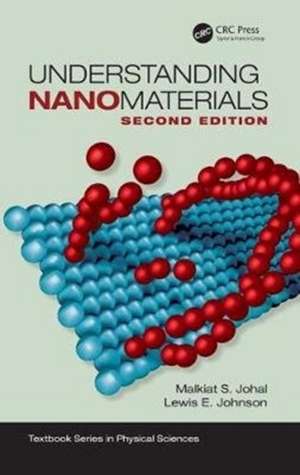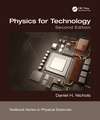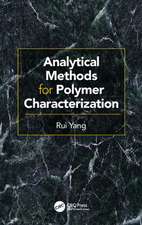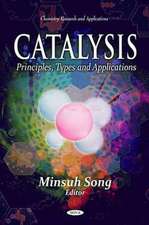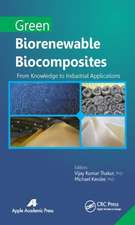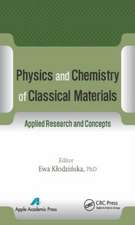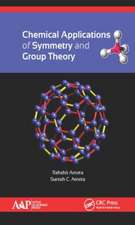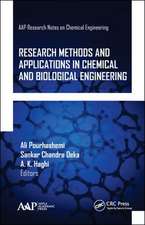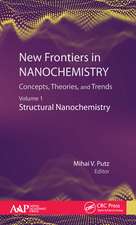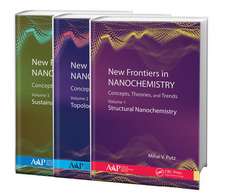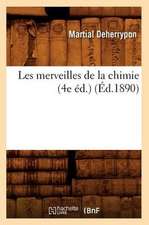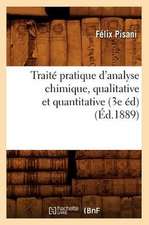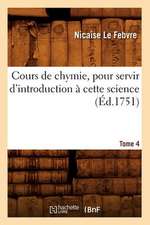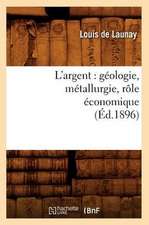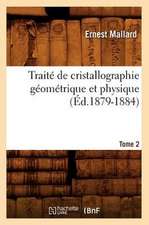Understanding Nanomaterials: Textbook Series in Physical Sciences
Autor Malkiat S. Johal, Lewis E. Johnsonen Limba Engleză Paperback – 18 apr 2018
"clear and informative” ―Chemistry World
The authors provide the perfect training tool for the workforce in nanotech development by presenting the fundamental principles that govern the fabrication, characterization, and application of nanomaterials. This edition represents a complete overhaul, giving a much more complete, self-contained introduction. As before, the text avoids excessive mathematical detail and is written in an easy to follow, appealing style suitable for anyone, regardless of background in physics, chemistry, engineering, or biology. The organization has been revised to include fundamental physical chemistry and physics pertaining to relevant electrical, mechanical, and optical material properties.
- Incorporates new and expanded content on hard materials, semiconductors for nanoelectronics, and nonlinear optical materials.
- Adds many more worked examples and end-of-chapter problems.
- Provides more complete coverage of fundamentals including relevant aspects of thermodynamics, kinetics, quantum mechanics, and solid-state physics, and also significantly expands treatment of solid-phase systems.
Lewis E. Johnson is a research scientist at the University of Washington, where he also earned his doctorate in chemistry and nanotechnology.
| Toate formatele și edițiile | Preț | Express |
|---|---|---|
| Paperback (1) | 494.34 lei 6-8 săpt. | |
| CRC Press – 18 apr 2018 | 494.34 lei 6-8 săpt. | |
| Hardback (1) | 875.55 lei 6-8 săpt. | |
| CRC Press – 18 apr 2018 | 875.55 lei 6-8 săpt. |
Preț: 494.34 lei
Preț vechi: 655.57 lei
-25% Nou
Puncte Express: 742
Preț estimativ în valută:
94.60€ • 97.73$ • 78.73£
94.60€ • 97.73$ • 78.73£
Carte tipărită la comandă
Livrare economică 25 martie-08 aprilie
Preluare comenzi: 021 569.72.76
Specificații
ISBN-13: 9781482253221
ISBN-10: 1482253224
Pagini: 528
Ilustrații: 205
Dimensiuni: 203 x 229 x 33 mm
Greutate: 0.93 kg
Ediția:Revised
Editura: CRC Press
Colecția CRC Press
Seria Textbook Series in Physical Sciences
ISBN-10: 1482253224
Pagini: 528
Ilustrații: 205
Dimensiuni: 203 x 229 x 33 mm
Greutate: 0.93 kg
Ediția:Revised
Editura: CRC Press
Colecția CRC Press
Seria Textbook Series in Physical Sciences
Public țintă
UndergraduateCuprins
Series Preface
Preface to the Second Edition
Preface to the First Edition
Acknowledgments
Authors
Chapter 1 A Brief Introduction to Nanoscience
Chapter 2 Thermodynamics and Nanoscience
Chapter 3 Kinetics and Transport in Nanoscience
Chapter 4 Quantum Effects at the Nanoscale
Chapter 5 Intermolecular Interactions and Self-Assembly
Chapter 6 Bulk Characterization Techniques for Nanomaterials
Chapter 7 Fundamentals of Surface Nanoscience
Chapter 8 Surface Characterization and Imaging Methods
Chapter 9 Introduction to Functional Nanomaterials
Chapter 10 Fabrication, Properties, and Applications of Thin Films
Glossary
Index
Preface to the Second Edition
Preface to the First Edition
Acknowledgments
Authors
Chapter 1 A Brief Introduction to Nanoscience
Chapter 2 Thermodynamics and Nanoscience
Chapter 3 Kinetics and Transport in Nanoscience
Chapter 4 Quantum Effects at the Nanoscale
Chapter 5 Intermolecular Interactions and Self-Assembly
Chapter 6 Bulk Characterization Techniques for Nanomaterials
Chapter 7 Fundamentals of Surface Nanoscience
Chapter 8 Surface Characterization and Imaging Methods
Chapter 9 Introduction to Functional Nanomaterials
Chapter 10 Fabrication, Properties, and Applications of Thin Films
Glossary
Index
Notă biografică
Malkiat S. Johal is a professor of Physical Chemistry at Pomona College. He obtained a first class honors degree in chemistry from the University of Warwick, UK. His research laboratory at Pomona College focuses on using self-assembly and ionic adsorption processes to fabricate nanomaterials for optical and biochemical applications. He also explores fundamental phenomena such as ion-pair complexation, adsorption, surface wettability, and intermolecular non-covalent interactions in materials at interfaces. He has published more than eighty research papers, mostly co-authored by his undergraduate research students. He teaches courses in physical chemistry, general chemistry and soft nanomaterials.
Lewis E. Johnson is a research scientist at the University of Washington. He earned his Ph.D. in Chemistry and Nanotechnology from the University of Washington under the guidance of Professor Bruce Robinson. He has taught at Pomona College (his undergraduate alma mater) as a postdoctoral lecturer and worked as postdoctoral research associate at Pacific Northwest National Laboratory, where he conducted research on glass formation in calcium aluminate electride semiconductors with Dr. Peter Sushko and on allosteric modulation of electron transfer in nitrogenase with Dr. Simone Raugei. His current research involves designing and characterizing new nonlinear optical dyes and modeling the formation and structure of complex non-crystalline materials, among other projects.
Lewis E. Johnson is a research scientist at the University of Washington. He earned his Ph.D. in Chemistry and Nanotechnology from the University of Washington under the guidance of Professor Bruce Robinson. He has taught at Pomona College (his undergraduate alma mater) as a postdoctoral lecturer and worked as postdoctoral research associate at Pacific Northwest National Laboratory, where he conducted research on glass formation in calcium aluminate electride semiconductors with Dr. Peter Sushko and on allosteric modulation of electron transfer in nitrogenase with Dr. Simone Raugei. His current research involves designing and characterizing new nonlinear optical dyes and modeling the formation and structure of complex non-crystalline materials, among other projects.
Recenzii
"a well-organized book that provides an excellent introduction in nanoscience and the design of nanomaterials. The book is accessible to newcomers to the field, including the undergraduate reader, and provides a sound and broad basis upon which to pursue further in-depth study."
—Prof. dr. ir. Andre ten Elshof, University of Twente
"an indispensable resource in the fields of biophysics, chemistry, nanoscience and beyond. The breadth and depth of knowledge presented herein is unmatched. A clearly written and thorough understanding of the basics, as well as state-of-the-art, in biophysics is provided. But this book also includes several well organized chapters on synthesis and characterization methods for nanomaterials used in biophysical studies. It truly embodies the multidisciplinary nature of modern research."
—Marcus D. Lay, PhD, The Cooper Union for the Advancement of Science and Art
—Prof. dr. ir. Andre ten Elshof, University of Twente
"an indispensable resource in the fields of biophysics, chemistry, nanoscience and beyond. The breadth and depth of knowledge presented herein is unmatched. A clearly written and thorough understanding of the basics, as well as state-of-the-art, in biophysics is provided. But this book also includes several well organized chapters on synthesis and characterization methods for nanomaterials used in biophysical studies. It truly embodies the multidisciplinary nature of modern research."
—Marcus D. Lay, PhD, The Cooper Union for the Advancement of Science and Art
Descriere
This edition represents a complete overhaul of the original work, giving a complete, self-contained introduction to nanomaterials. The organization has been completely revamped, with inclusion of fundamental physical chemistry and physics pertaining to relevant electrical, mechanical, and optical material properties.
